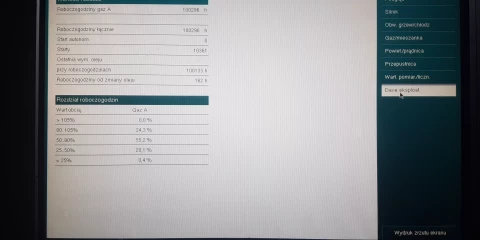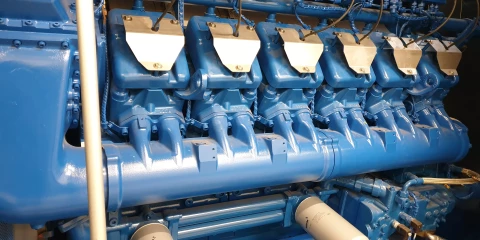Expansion of the cogeneration system
Expansion of the system took place in 2008, after RCGW began working with the Danone plant, and in 2012, when CES delivered a MWM TCG 2016 V08 cogeneration module with 400kWe/394kWth power to the treatment plant. The total installed electrical capacity of the equipment operating at the wastewater treatment plant is now 1090kWe, while the total thermal capacity is 1456kWth.

Heat for the swimming pool
In 2014, RCGW began construction of a water park, whose business model was based on the innovative idea of self-sufficiency energy. A detailed concept was developed, which also included a construction of a six-kilometre-long pipeline to connect the sewage treatment plant with the water park under construction. Centrum Elektroniki Stosowanej (CES) was also selected as a cogeneration technology supplier for this bold project. CES designed a system with three CHP units, each with an electrical output of 400 kWe.
The first two MWM TCG 2016 V08 gensets of 400kWe and 433kWth and a biogas boiler with a thermal output of 1.1MWth were delivered in 2017. The concept was that all the heat recovered from the CHP units: from the cooling of the engine jacket, the heat of the exhaust gas, the low-temperature heat from the cooling of the fuel-air mixture would be used to heat the water in the pools and the entire Water Park complex.
When the heat from cogeneration is not sufficient to cover all needs, a biogas boiler is switched on. It was important in the design of the project that the energy obtained from biogas should be used to the maximum, due to the philosophy of the owner of the water park and his ecological approach to his projects. The high thermal demand of the pools is an ally here. During the summer, when the heat demand decreases, it is sold to the municipal grid.
In 2019, the third of the CHP units a MWM TCG 3016 V08 model with 400kWe and 428kWth power was installed. The use of several CHP units gives great flexibility in managing biogas consumption. The units have the ability to operate in island mode and provide an emergency power source in the event of a power failure.
Innovative solutions for CHP system operation
Many of the cogeneration system solutions at the wastewater treatment plant and Water Park in Tychy are non-standard or innovative. These include:
- emergency cooling of the units in the treatment plant via a liquid exchanger using treated wastewater instead of fan coolers;
- heat is received by the pool water, just like in the water park;
- powering the water park's units with biogas supplied via a pipeline from the treatment plant;
- possibility of reselling heat to the PEC network from the Water Park; use of the biogas pipeline as a buffer tank;
- management of the 6 generators at the two locations and synchronisation of their operation so that both the treatment plant and the water park are properly supplied
All this was achievable thanks to the bold and out-of-the-box ideas of the investor and the contractor who was able to realise these visions, but also thanks to the work, commitment and exchange of experience of the people involved in the project from both RCGW and CES.
Read also about our CHP implementation for Clinico Medical: https://ces.com.pl/trigeneracja-w-zakladach-medycznych-clinico-medical-opis-realizacji.html

